Blog
6 Types of Scuba Diving: From Open Water Diving to Technical Diving
Are you interested in discovering what lies beneath the ocean’s surface? If so, then scuba diving may be for you! Scuba diving is an incredibly rewarding and educational experience that allows divers to explore a rich array of underwater sights and take part in activities unavailable to those staying on dry land.
Whether your goal is to appreciate the natural beauty of coral reefs, search for sunken shipwrecks, or venture deep into unexplored depths, there are various types of scuba dives tailored specifically to different skill levels.
In this blog post, we’ll cover 6 popular types of scuba diving – from open water diving all the way up to Technical Diving – offering detailed information about each type along with tips and tricks for getting started. Let’s dive right in!
What is scuba diving?
Scuba diving is the self-contained underwater breathing apparatus used for both recreational and professional purposes. It is an excellent way to explore the undersea environment, get closer to nature, and observe marine life from an up-close distance. Moreover, scuba diving also unlocks many opportunities for technical divers and military personnel.
It can be used for educational projects or research purposes, as the distinct environment provides an excellent opportunity for scientists and researchers to observe otherwise inaccessible regions. Scuba diving enables individuals to discover much more than just what lies at the surface, as it gives them a chance to witness some of our planet’s most spectacular displays in terms of both its natural beauty and biodiversity. Whether one takes it up as a hobby or as part of their job, scuba diving is truly rewarding experience that opens up a whole new world that was previously hidden from view.
Different Types of Scuba Diving
Scuba diving is a thrilling activity and can take many forms. Open Water Diving is the most commonly known form of scuba diving, often done in calm waters and shallow depths. Beyond that, you can find Cave Diving, Drift Diving and Wreck Diving, each with its own unique challenges and rewards.
Cave diving requires technical skill and knowledge to navigate safe diving practices in the challenging environment of dark passages, while drift diving is an exciting tactic that allows divers to let the currents move them along as they explore.
Finally, wreck diving offers fantastic opportunities to explore ruins beneath the water’s surface. A diver can learn these skills quickly at any respected dive related course or program administered by certified experts under modern safety standards no matter which type of scuba diving interests them most.
Open Water Diving
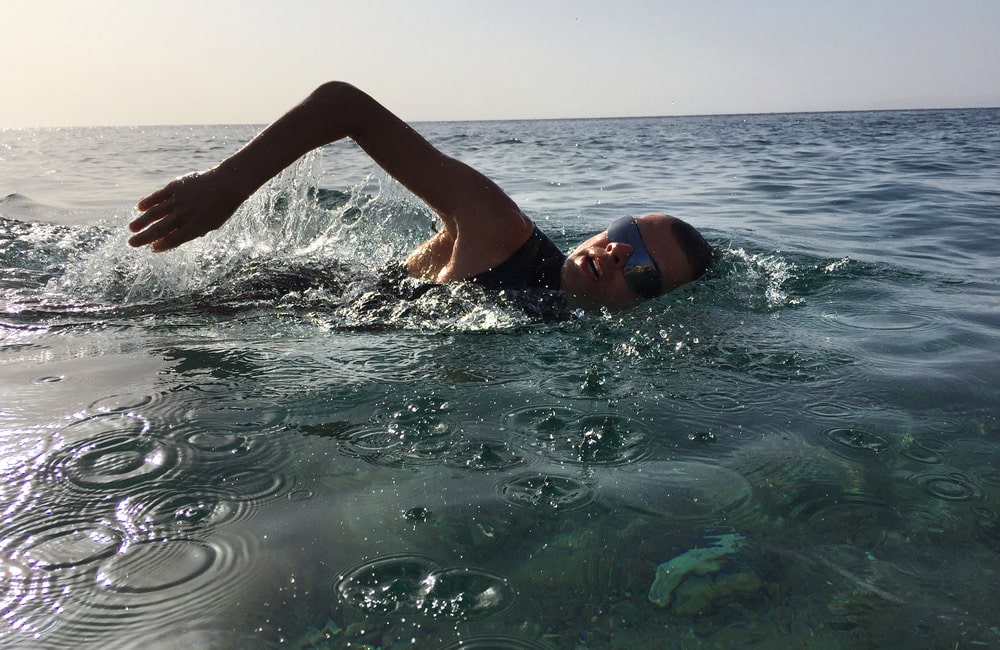
What is Open Water Diving?
Open Water Diving is a popular scuba diving activity that involves submerging oneself in a body of water and exploring the vast array of marine life found beneath the surface. It is an incredibly rewarding experience for both experienced and beginner divers alike.
Training required for open water diving
Although it has a reputation for being intimidating, with the proper training and the correct equipment, open water diving can be quite safe and exciting. Certified open water divers are required to have knowledge of safety procedures, such as safety stops and buoyancy control, and be familiar with the other fundamental concepts of scuba including dive planning, dive tables, and basic oxygen management. With this information at their disposal, all that’s left for divers to do is begin their journey into the depths of the watery unknown.
Types of open water dives
Following are the types of open water dives:
1. Reef dives
Reef dives allow divers to observe the vibrant and exotic marine life while exploring fascinating coral structures.
2.Wreck dives
Wreck dives offer an exciting opportunity to discover sunken ships, motor vehicles and other artefacts that have been swallowed by the deep sea.
3.Drift dives
Drift dives are ideal for those seeking a thrilling adventure, allowing them to gradually descend into unknown depths with the easy flow of ocean currents.
Connected with hundreds of years of seafaring history, all types of open water dives provide incredible discoveries and magical moments in this mysterious underwater realm.
Night diving
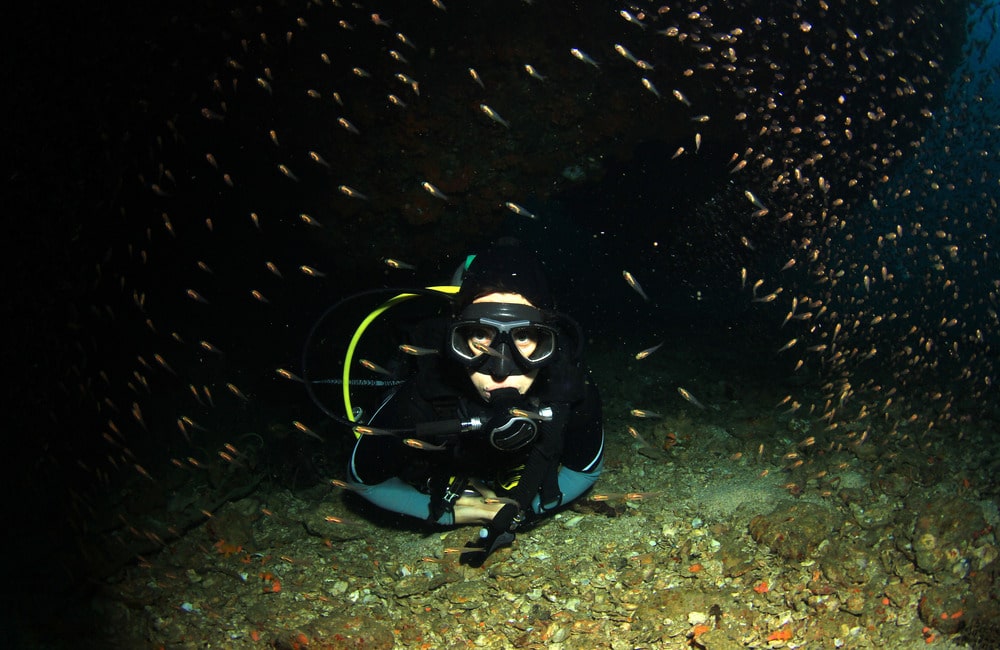
What is Night Diving?
Night diving is a mesmerizing form of scuba diving which can only be safely enjoyed after going through the appropriate training. Night dives occur in low light and require key skills from divers that help them navigate the dark, spot marine life they’re likely to encounter, and maintain safety during the dive.
Training required for night diving
To prepare for night dives, scuba divers typically receive specific training in areas such as navigation without natural light, proper use of equipment like torches and compasses, assessing visibility conditions, buoyancy control at night versus day, communications with your dive partner while in the dark water and using safety markers. With these key piece of knowledge in place, divers are then ready to experience the enchanting abundance of sea life that comes out only when it’s dark.
Types of night dives
Night dives are a thrilling and memorable experience for many divers around the world, offering a unique view of aquatic life. Divers can choose from three primary types of night dives, depending on their preference and desired experience.
1.Bioluminescent dives
Bioluminescent dives provide an opportunity to witness the incredible glow produced by tiny organisms, leading to breathtaking views beneath the surface of the water.
2.Flashlight dives
. Flashlight dives allow divers to illuminate creatures in their natural environment with handheld torches, providing an up-close look at aquatic life from a safe distance.
3.Full moon dives
Full moon dives are an unforgettable way to spend an evening underwater, surrounded by the moon’s beautiful rays as they reflect off the surface of the water.
Cave Diving
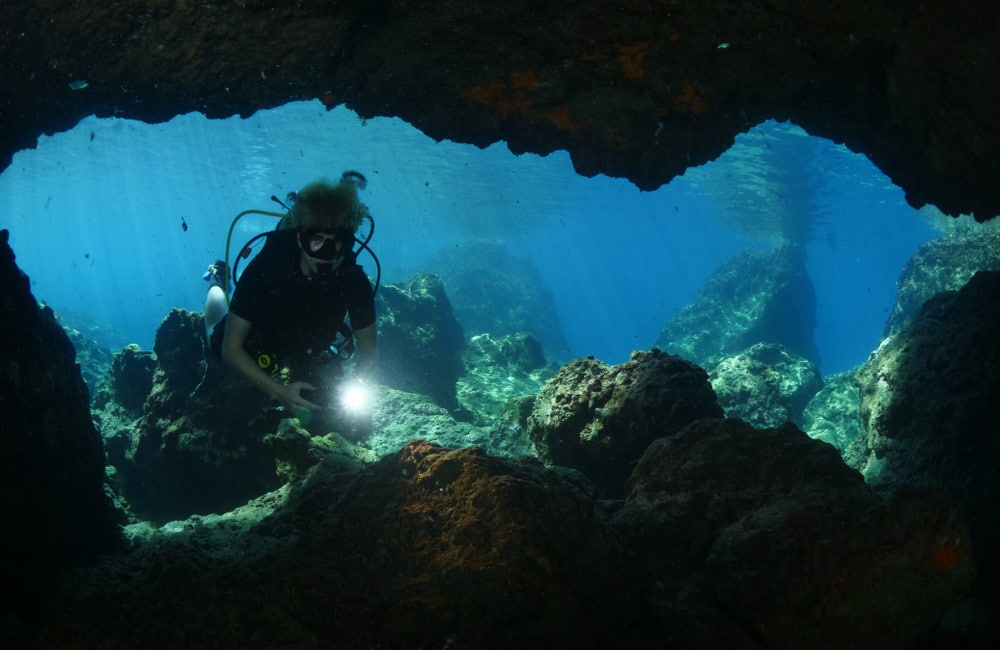
What is Cave Diving?
Cave diving is an extreme form of underwater exploration and one of the most demanding scuba specialties. It entails exploring and navigating underwater cave systems, usually with no direct access to the surface.
Training required for cave diving
Proper training and expertise is necessary for safe cave dives; aspirants must demonstrate an in-depth knowledge of dive planning, techniques, decompression practices, navigation, equipment requirements, and procedures. Further, divers must be aware of environment-specific hazards such as sharp rocks and overhead entanglements. This type of specialized diving requires a high level of discipline and vigilance; consequently, those interested in taking on cave dives should undertake a comprehensive caver diver training program and gradually build up their experience.
Types of cave dives
While there are a variety of cave dives available to certified cave divers, the three most popular types of dives include non-penetration cave dives, penetration cave dives and cenote dives.
1.Non-penetration cave dives
Non-penetration cave plunges involve exploring the entrance area of a cave without penetrating its depths.
2.Penetration cave dives
Penetration cave diving requires specialized training as it includes entering a passage entrance to further explore the interior of the system and beyond
3.Cenote dives
Cenote diving is unique in that it is meant to be done in pristine, clear freshwater caverns found only in Mexico’s Yucatan Peninsula.
Although all three types of cave dives have their own risks and requirements for safety precautions, they provide distinct experiences for those looking to explore the aquatic underworld.
Wreck Diving
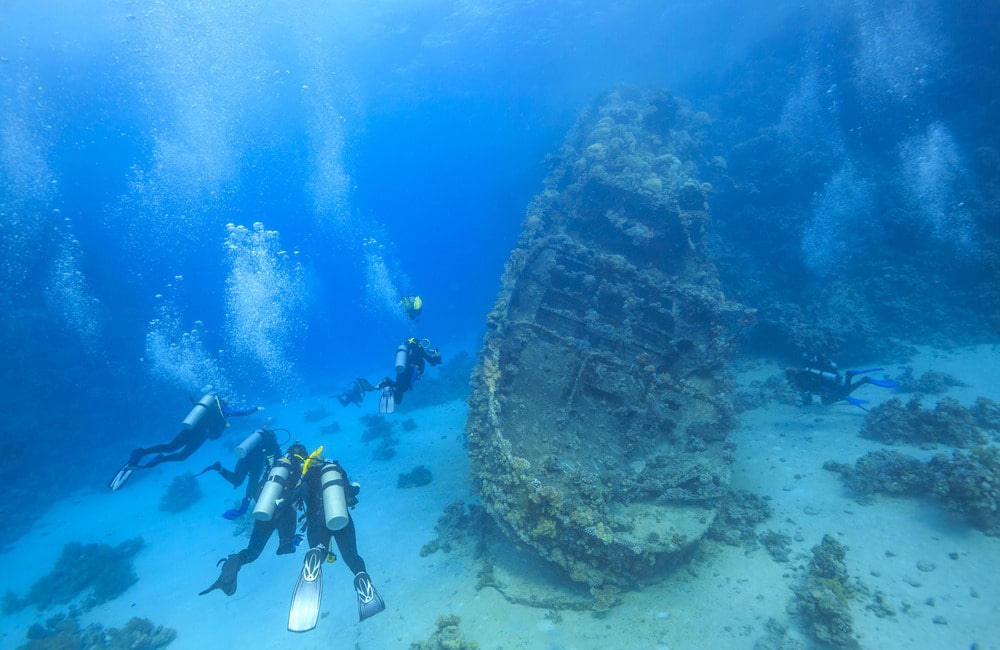
What is Wreck diving?
Wreck diving is an exciting form of underwater exploration that involves visiting sunken ships and other structures. It requires specific preparation to ensure the safety of the diver, including knowledge of technical diving, experience with advanced rescue training, and familiarity with basic hazardous material awareness procedures.
Training required for wreck diving
With proper training, wreck diving can be a thrilling and rewarding experience for any adventure enthusiast. Divers can explore shipwrecks from all over the world, uncovering artifacts and stories of maritime history. Wreck dives are sure to tantalize even the most seasoned professionals.
Types of wreck dives
Wreck diving is becoming increasingly popular as divers are given the unique opportunity to explore ancient shipwrecks and discover incredible hidden treasures. Depending on the location, there are three main types of wreck dives – historical wreck dives, artificial wreck dives and natural wreck dives.
1.Historical wreck dives
Historical wrecks for instance, include ships and aircrafts that date back centuries and can provide an immersed glimpse into our past.
2.Artificial wreck dives
Artificial wrecks are man-made structures designed for recreational purposes such as decommissioned vessels, warplanes, cars and concrete blocks.
3.Natural wreck dives
Natural wrecks on the other hand are formed by natural forces – weathering, storms or ship collisions – that have sunk to the ocean floor over time. Regardless of type, each wreck offers an interesting range of discoveries for adventurers who seek thrills beneath the surface!
Deep Diving
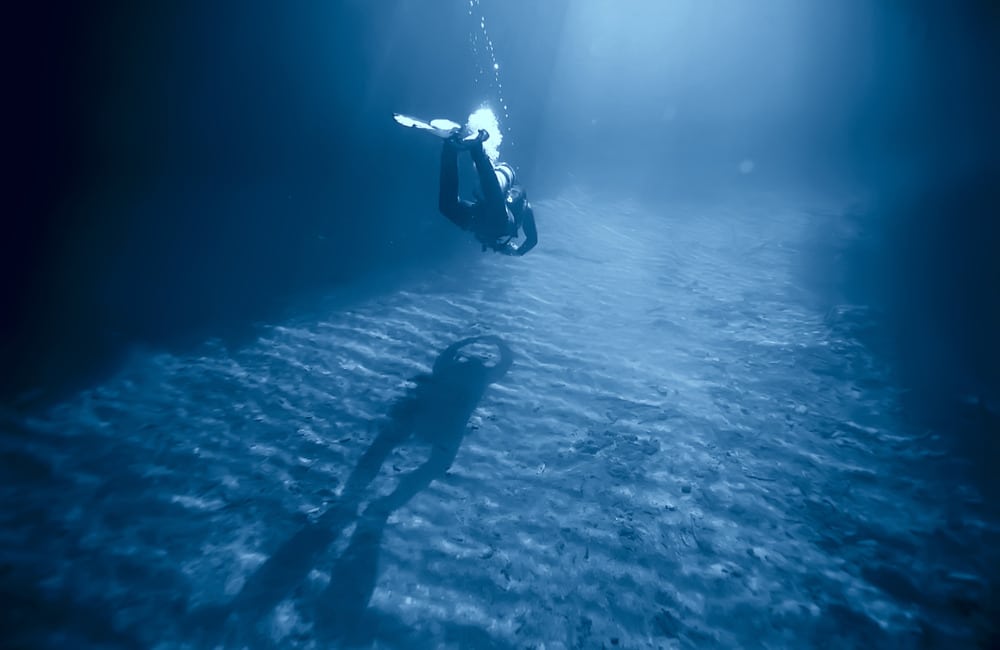
What is Deep Diving?
Deep diving is a specialized form of water sport wherein participants venture greater depths than traditional snorkeling and recreational scuba diving. It is a physically and mentally demanding activity, requiring both skill and endurance to perform safely.
Training required for deep diving
Deep dive training involves basic rescue techniques as well as an understanding of the effects of pressure on the body. To ensure safety, deep divers must be certified to prove they are knowledgeable in proper procedures and equipped with appropriate diving gear. With proper training and dedication, deep divers can partake in a thrilling and rewarding experience that takes them further beneath the surface than ever before.
Types of deep dives
Deep dives refer to a type of scuba diving where divers descend to deeper than 18 meters (60 feet). There are three distinct types of deep dives: technical, recreational and wreck.
1.Technical deep dives
Technical deep dives involve the use of specialized equipment, including extra gas sources and safety systems.
2.Deep recreational dives
Recreational deep dives typically involve exploring deeper areas of a reef or other aquatic environment with improved visibility and complex ecosystems.
3.Deep wreck dives
Deep wreck dives explore vessel or aircraft wrecks that are located further below than most recreational divers venture.
Safety protocols should be adhered to in all forms of deep dive activities, since they pose a greater risk than shallower dives.
Technical Diving
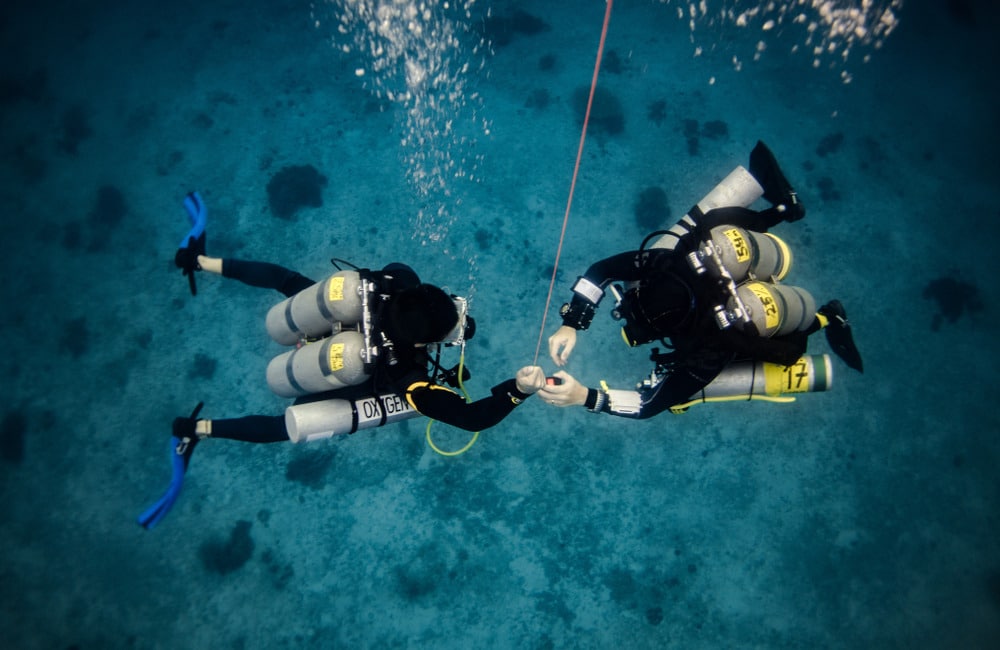
What is Technical Diving?
Technical diving is an advanced form of underwater exploration that requires specialized equipment and training. It involves activities such as cave and wreck dives, deep sea exploration, and solo diving; all of which can be dangerous if not done with precision and skill. It’s important to note that technical divers require significantly more detailed training than non-technical divers due to the higher risk associated with this activity.
Training required for technical diving
Training for technical divers often includes topics such as decompression theory, gas management, use of specialized equipment, stages of ascents/descents, and recognition of hazards. Technical divers also need to be proficient in rescuing either themselves or another diver in an emergency situation. Ultimately, having knowledge and the proper certifications are essential when going on a technical dive to ensure safety is upheld.
Types of technical dives
1.Trimix dives
Trimix grounds divers with knowledge of gas blending and associated safety procedures, There is much more involved than meets the eye when it comes to technical diving, but anyone with the ambition and dedication can become a skilled tech diver.
2.Rebreather dives
While rebreather divers learn how to utilize semi-closed and closed system operations.
3.Cave penetrations
Cave penetration dives require cave navigation skill sets and protocols related to risk management in overhead environments.
Conclusion
Scuba diving is a beautifully calming form of aquatic exploration, one that anyone and everyone have the capability to do. Whether you’re an advanced diver or just starting out, there is something that suits your level of comfort and adventure.
